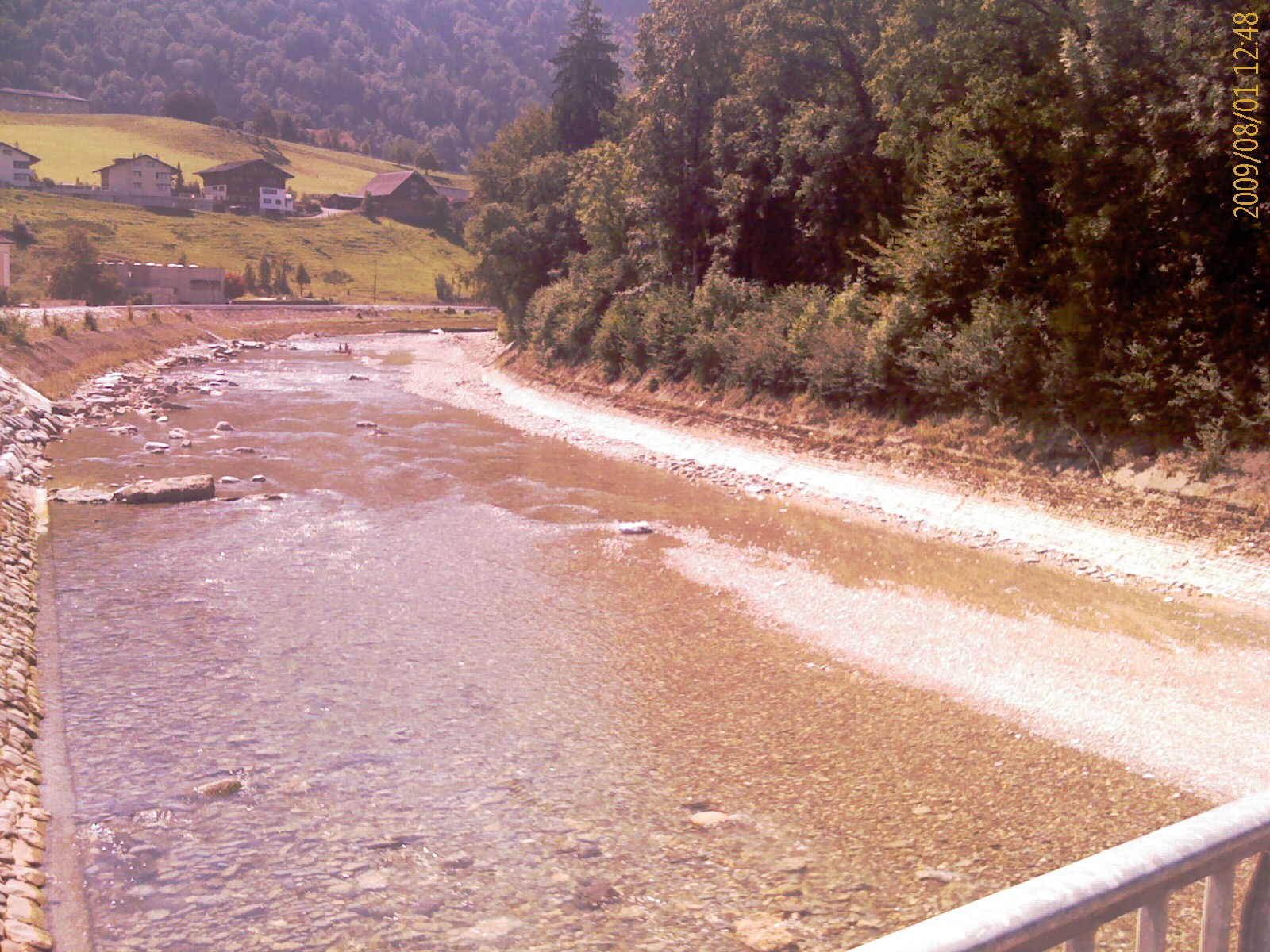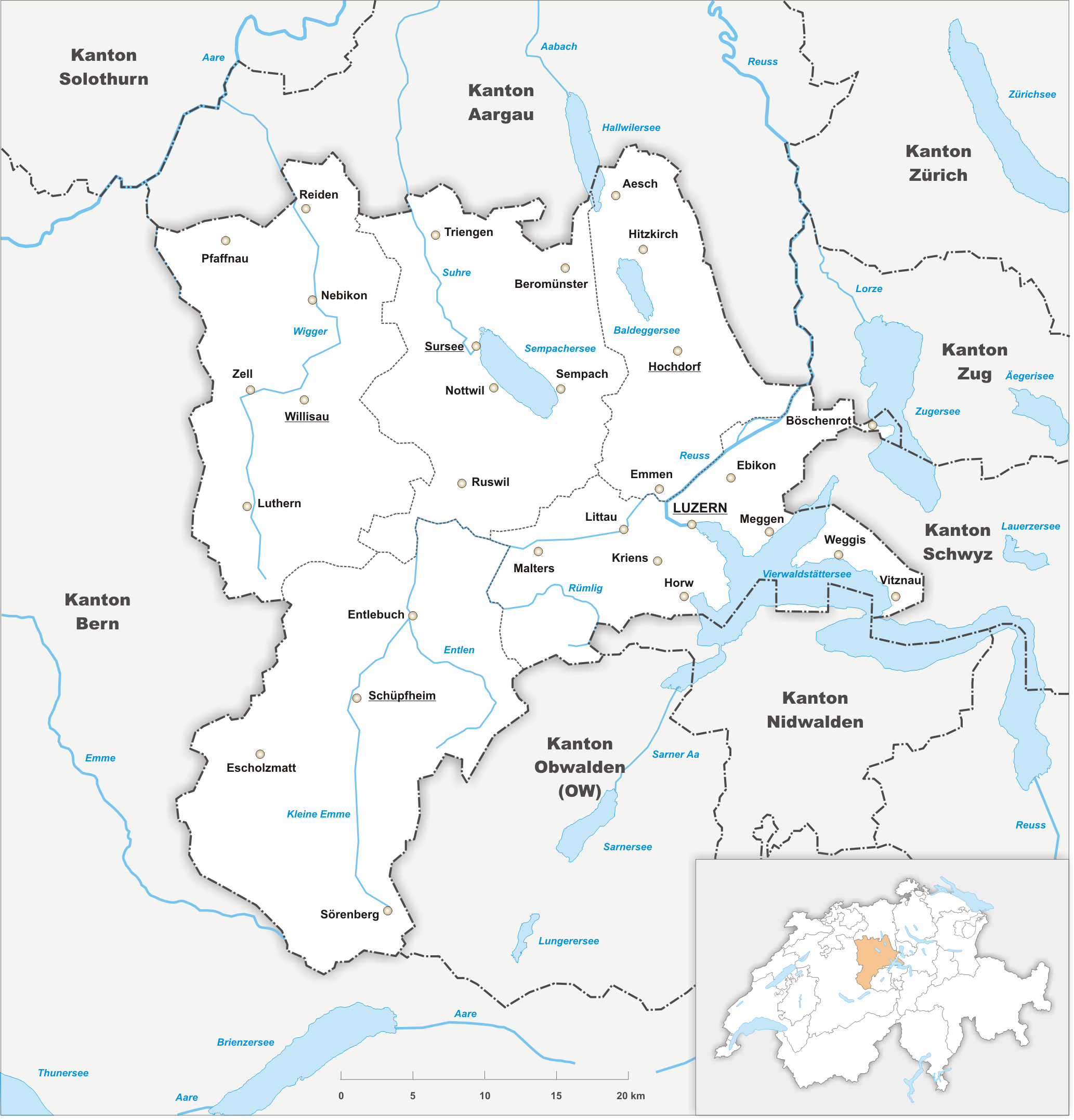|
Littau Railway Station
Littau railway station (german: Bahnhof Littau) is a railway station in the locality of Littau, within the municipality of Lucerne, in the Swiss canton of Lucerne. It is an intermediate stop on the standard gauge Bern–Lucerne line of Swiss Federal Railways. Services The following services stop at Littau: * Lucerne S-Bahn The Lucerne S-Bahn (german: S-Bahn Luzern) is an S-Bahn-style commuter rail network focusing on Lucerne, Switzerland. Opened on 12 December 2004, the network forms part of the Central Switzerland S-Bahn project (german: S-Bahn Zentralschweiz, link ...: ** : hourly service between Lucerne and or ; the train splits at . ** : rush-hour service between and Lucerne. SBB Historic - F 122 00611 003 - Littau neues und altes Stationsgebaeude Bahnseite.jpg, old and new station buildings in 2000 SBB Historic - F 122 00611 005 - Littau altes Stationsgebaeude mit Gueterschuppen Strassenseite.jpg, old station building, Cheerstrasse-side References External l ... [...More Info...] [...Related Items...] OR: [Wikipedia] [Google] [Baidu] |
Lucerne
Lucerne ( , ; High Alemannic: ''Lozärn'') or Luzern ()Other languages: gsw, Lozärn, label= Lucerne German; it, Lucerna ; rm, Lucerna . is a city in central Switzerland, in the German-speaking portion of the country. Lucerne is the capital of the canton of Lucerne and part of the district of the same name. With a population of approximately 82,000 people, Lucerne is the most populous city in Central Switzerland, and a nexus of economics, transportation, culture, and media in the region. The city's urban area consists of 19 municipalities and towns with an overall population of about 220,000 people. Owing to its location on the shores of Lake Lucerne (german: Vierwaldstättersee) and its outflow, the river Reuss, within sight of the mounts Pilatus and Rigi in the Swiss Alps, Lucerne has long been a destination for tourists. One of the city's landmarks is the Chapel Bridge (german: Kapellbrücke, link=no), a wooden bridge first erected in the 14th century. The official lan ... [...More Info...] [...Related Items...] OR: [Wikipedia] [Google] [Baidu] |
Switzerland
; rm, citad federala, links=no). Swiss law does not designate a ''capital'' as such, but the federal parliament and government are installed in Bern, while other federal institutions, such as the federal courts, are in other cities (Bellinzona, Lausanne, Lucerne, Neuchâtel, St. Gallen a.o.). , coordinates = , largest_city = Zurich , official_languages = , englishmotto = "One for all, all for one" , religion_year = 2022 , religion_ref = , religion = , demonym = , german: link=no, Schweizer/Schweizerin, french: link=no, Suisse/Suissesse, it, svizzero/svizzera or , rm, Svizzer/Svizra , government_type = Federal assembly-independent directorial republic , leader_title1 = Federal Council , leader_name1 = , leader_title2 = , leader_name2 = Viktor Rossi , legislature = Federal Assembly , upper_house = Counci ... [...More Info...] [...Related Items...] OR: [Wikipedia] [Google] [Baidu] |
Swiss Federal Railways
Swiss Federal Railways (german: link=no, Schweizerische Bundesbahnen, ''SBB''; french: link=no, Chemins de fer fédéraux suisses, ''CFF''; it, Ferrovie federali svizzere, ''FFS'') is the national railway company of Switzerland. It is usually referred to by the initials of its German, French, and Italian names, either as SBB CFF FFS, or used separately. The Romansh version of its name, ''Viafiers federalas svizras'', is not officially used. The official English abbreviation is "SBB", instead of the English acronym such as "SFR", which stands for ''Swiss Federal Railways'' itself. The company, founded in 1902, is headquartered in Bern. It used to be a government institution, but since 1999 it has been a special stock corporation whose shares are held by the Swiss Confederation and the Swiss cantons. It is currently the largest rail and transport company of Switzerland, and operates on most standard gauge lines of the Swiss network. It also heavily collaborates wi ... [...More Info...] [...Related Items...] OR: [Wikipedia] [Google] [Baidu] |
Bern–Lucerne Railway
The Bern–Lucerne railway is a partially double-track, electrified railway through the Entlebuch in Switzerland. The main section between Langnau and Gütsch near Lucerne was opened on 11 August 1875. History In 1857, the Swiss East–West Railway (''Schweizerische Ostwestbahn'') planned a railway on the La Neuveville–Biel–Bern– Gümligen– Langnau–Lucerne–Zug–Zürich route with a branch from Zug to Rapperswil, part of which would have formed this line. Since construction had begun without finance having been secured, the company went bankrupt. The canton of Bern took over the Bernese shares of the line and allowed the work to be completed. The Gümligen– Langnau section was opened by the Bern State Railway (''Bernische Staatsbahn'') on 1 June 1864. The Bern-Lucerne Railway (''Bern-Luzern-Bahn,'' BLB) took over the section in 1875 and opened the remaining section between Gütsch near Lucerne and Langnau on 11 August. Thus, continuous operations betwe ... [...More Info...] [...Related Items...] OR: [Wikipedia] [Google] [Baidu] |
Littau
Littau is a former municipality, and now part of the city of Lucerne, in the district of Lucerne in the canton of Lucerne in Switzerland. On 1 January 2010 the municipality of Littau merged into the municipality of Lucerne. History Littau is first mentioned in 1178 as ''Litowo''. On 1 January 2010, Littau has merged with the city (and municipality) of Lucerne. Art. 5 of the merger treaty states that the new municipality's name is to be "Luzern". Geography  Littau has an area of . Of this area, 52.3% is used for agricultural purposes, while 21.1% is forested. ...
Littau has an area of . Of this area, 52.3% is used for agricultural purposes, while 21.1% is forested. ...
[...More Info...] [...Related Items...] OR: [Wikipedia] [Google] [Baidu] |
Canton Of Switzerland
The 26 cantons of Switzerland (german: Kanton; french: canton ; it, cantone; Sursilvan and Surmiran: ; Vallader and Puter: ; Sutsilvan: ; Rumantsch Grischun: ) are the member states of the Swiss Confederation. The nucleus of the Swiss Confederacy in the form of the first three confederate allies used to be referred to as the . Two important periods in the development of the Old Swiss Confederacy are summarized by the terms ('Eight Cantons'; from 1353–1481) and ('Thirteen Cantons', from 1513–1798).rendered "the 'confederacy of eight'" and "the 'Thirteen-Canton Confederation'", respectively, in: Each canton of the Old Swiss Confederacy, formerly also ('lieu/locality', from before 1450), or ('estate', from ), was a fully sovereign state with its own border controls, army, and currency from at least the Treaty of Westphalia (1648) until the establishment of the Swiss federal state in 1848, with a brief period of centralised government during the Helvetic Republic ... [...More Info...] [...Related Items...] OR: [Wikipedia] [Google] [Baidu] |
Canton Of Lucerne
The canton of Lucerne (german: Kanton Luzern rm, Chantun Lucerna french: Canton de Lucerne it, Canton Lucerna) is a canton of Switzerland. It is located in the centre of Switzerland. The population of the canton (as of ) is . , the population included 57,268 foreigners, or about 15.8% of the total population. The cantonal capital is Lucerne. History The canton of Lucerne comprises territories acquired by its capital Lucerne, either by treaty, armed occupation or purchase. The first town acquired was Weggis (in 1380), Rothenburg, Kriens, Horw, Sempach and Hochdorf (all in 1394), Wolhusen and Entlebuch (1405), the so-called "Habsburger region" to the northeast of the town of Lucerne (1406), Willisau (1407), Sursee and Beromünster (1415), Malters (1477) and Littau (1481), while in 1803, in exchange for Hitzkirch, Merenschwand (held since 1397) was given up. Prehistory The oldest traces of humans in the Lucerne area are stone artifacts and cave bear bones found in ... [...More Info...] [...Related Items...] OR: [Wikipedia] [Google] [Baidu] |
Lucerne S-Bahn
The Lucerne S-Bahn (german: S-Bahn Luzern) is an S-Bahn-style commuter rail network focusing on Lucerne, Switzerland. Opened on 12 December 2004, the network forms part of the Central Switzerland S-Bahn project (german: S-Bahn Zentralschweiz, links=no), which also includes the Zug Stadtbahn (german: Stadtbahn Zug, links=no). Lines , the network consisted of the following lines: See also * Trolleybuses in Lucerne References External links BLS– official site {{coord missing, Switzerland S-Bahn in Switzerland S-Bahn The S-Bahn is the name of hybrid urban-suburban rail systems serving a metropolitan region in German-speaking countries. Some of the larger S-Bahn systems provide service similar to rapid transit systems, while smaller ones often resemble c ... 2004 establishments in Switzerland ... [...More Info...] [...Related Items...] OR: [Wikipedia] [Google] [Baidu] |
Railway Stations In The Canton Of Lucerne
Rail transport (also known as train transport) is a means of transport that transfers passengers and goods on wheeled vehicles running on rails, which are incorporated in tracks. In contrast to road transport, where the vehicles run on a prepared flat surface, rail vehicles (rolling stock) are directionally guided by the tracks on which they run. Tracks usually consist of steel rails, installed on sleepers (ties) set in ballast, on which the rolling stock, usually fitted with metal wheels, moves. Other variations are also possible, such as "slab track", in which the rails are fastened to a concrete foundation resting on a prepared subsurface. Rolling stock in a rail transport system generally encounters lower frictional resistance than rubber-tyred road vehicles, so passenger and freight cars (carriages and wagons) can be coupled into longer trains. The operation is carried out by a railway company, providing transport between train stations or freight customer faciliti ... [...More Info...] [...Related Items...] OR: [Wikipedia] [Google] [Baidu] |
Swiss Federal Railways Stations
Swiss may refer to: * the adjectival form of Switzerland *Swiss people Places *Swiss, Missouri * Swiss, North Carolina *Swiss, West Virginia *Swiss, Wisconsin Other uses *Swiss-system tournament, in various games and sports *Swiss International Air Lines **Swiss Global Air Lines, a subsidiary *Swissair, former national air line of Switzerland *.swiss alternative TLD for Switzerland See also *Swiss made, label for Swiss products *Swiss cheese (other) *Switzerland (other) *Languages of Switzerland, none of which are called "Swiss" *International Typographic Style, also known as Swiss Style, in graphic design *Schweizer (other), meaning Swiss in German *Schweitzer, a family name meaning Swiss in German *Swisse Swisse is a vitamin, supplement, and skincare brand. Founded in Australia in 1969 and globally headquartered in Melbourne, and was sold to Health & Happiness, a Chinese company based in Hong Kong previously known as Biostime International, in a ... [...More Info...] [...Related Items...] OR: [Wikipedia] [Google] [Baidu] |
Buildings And Structures In Lucerne
A building, or edifice, is an enclosed structure with a roof and walls standing more or less permanently in one place, such as a house or factory (although there's also portable buildings). Buildings come in a variety of sizes, shapes, and functions, and have been adapted throughout history for a wide number of factors, from building materials available, to weather conditions, land prices, ground conditions, specific uses, prestige, and aesthetic reasons. To better understand the term ''building'' compare the list of nonbuilding structures. Buildings serve several societal needs – primarily as shelter from weather, security, living space, privacy, to store belongings, and to comfortably live and work. A building as a shelter represents a physical division of the human habitat (a place of comfort and safety) and the ''outside'' (a place that at times may be harsh and harmful). Ever since the first cave paintings, buildings have also become objects or canvasses of much artistic ... [...More Info...] [...Related Items...] OR: [Wikipedia] [Google] [Baidu] |





